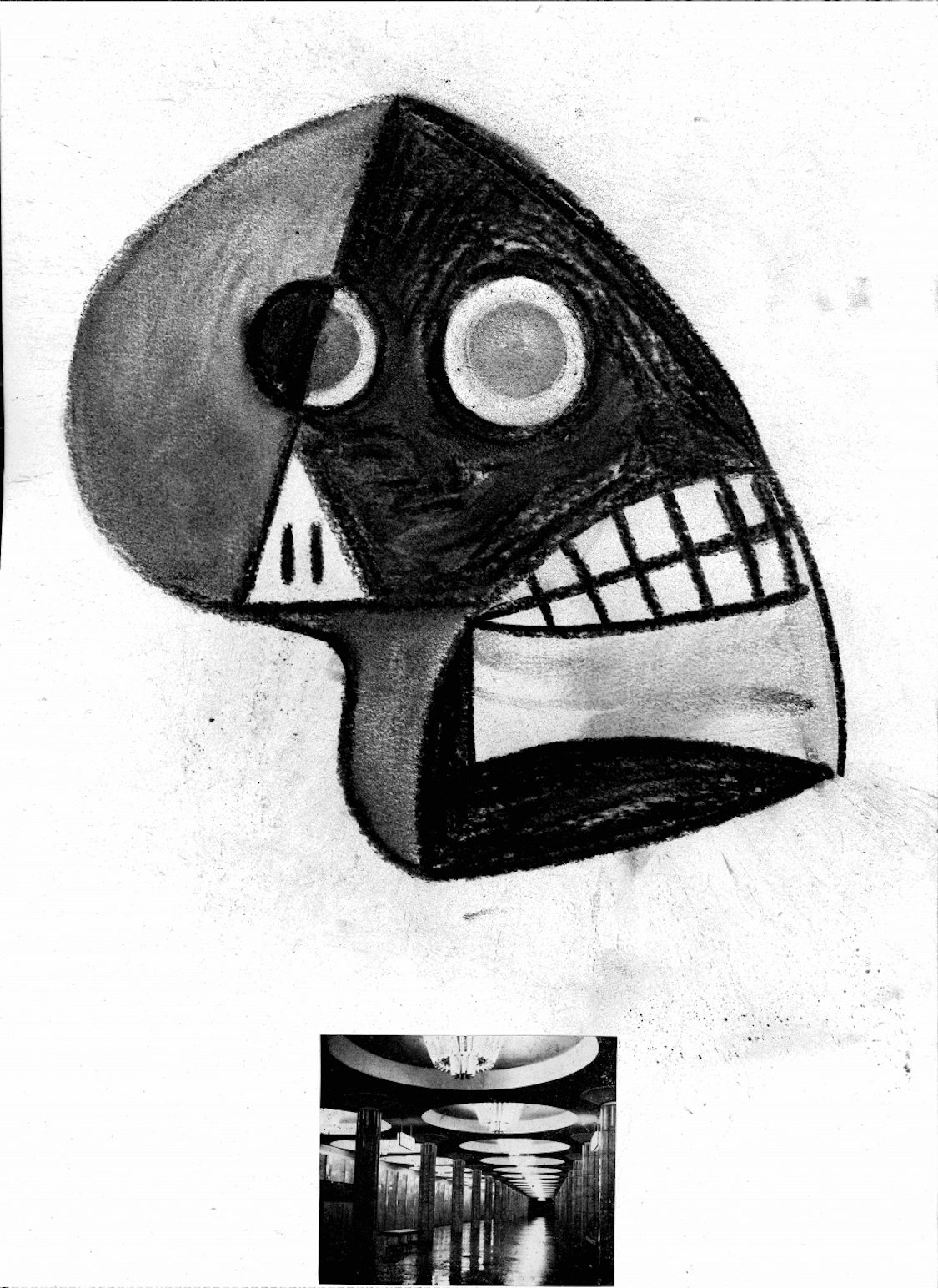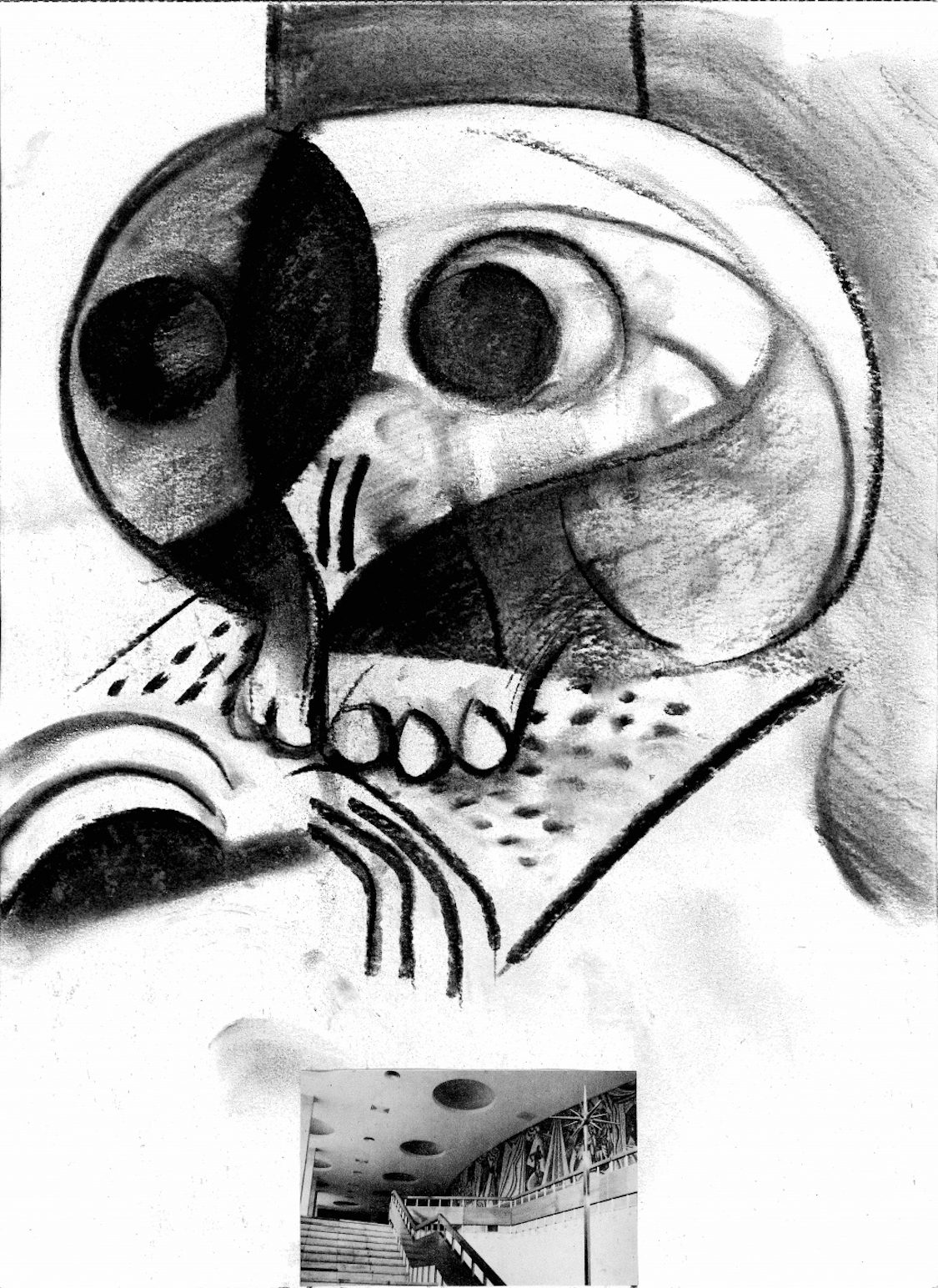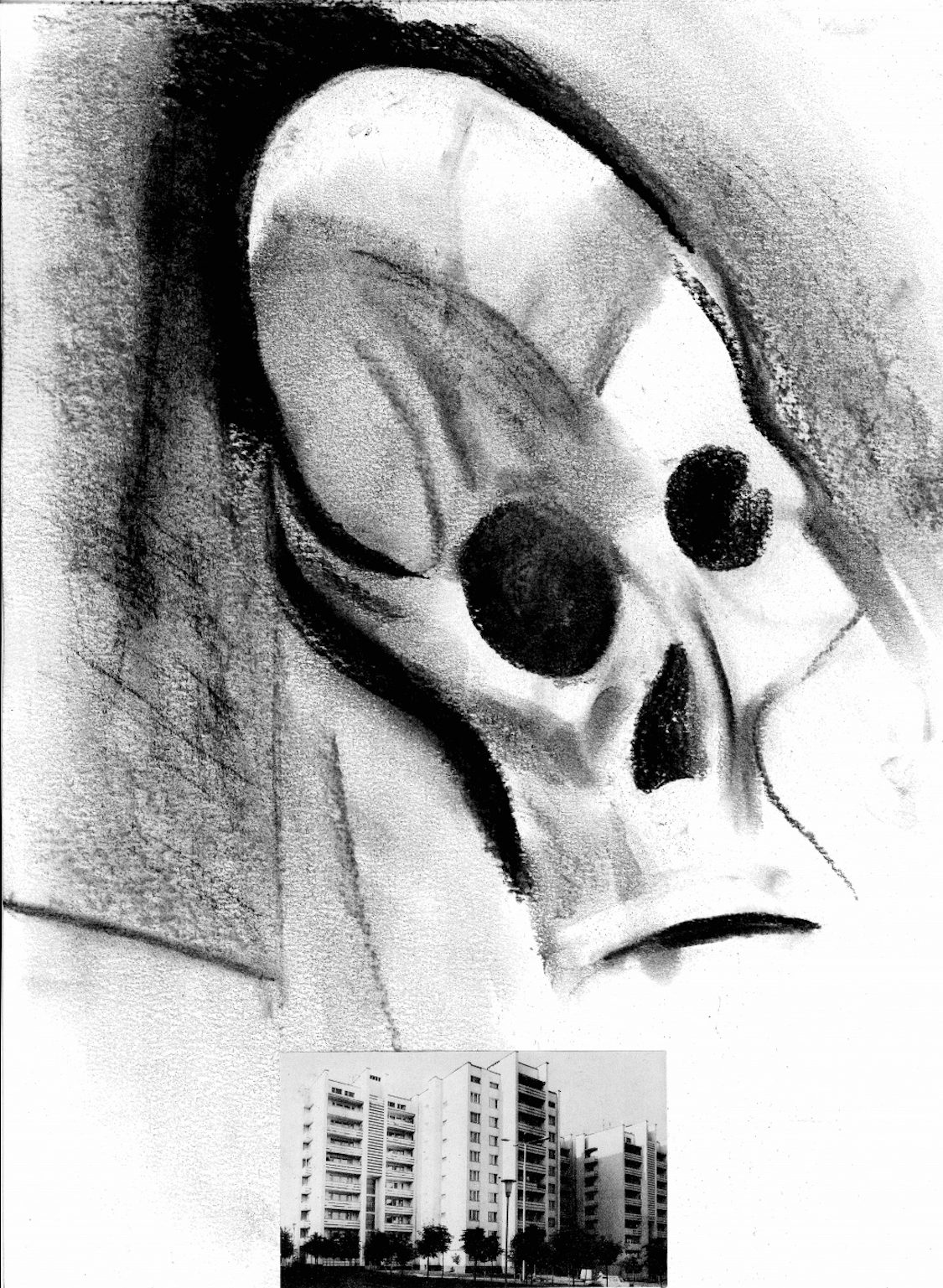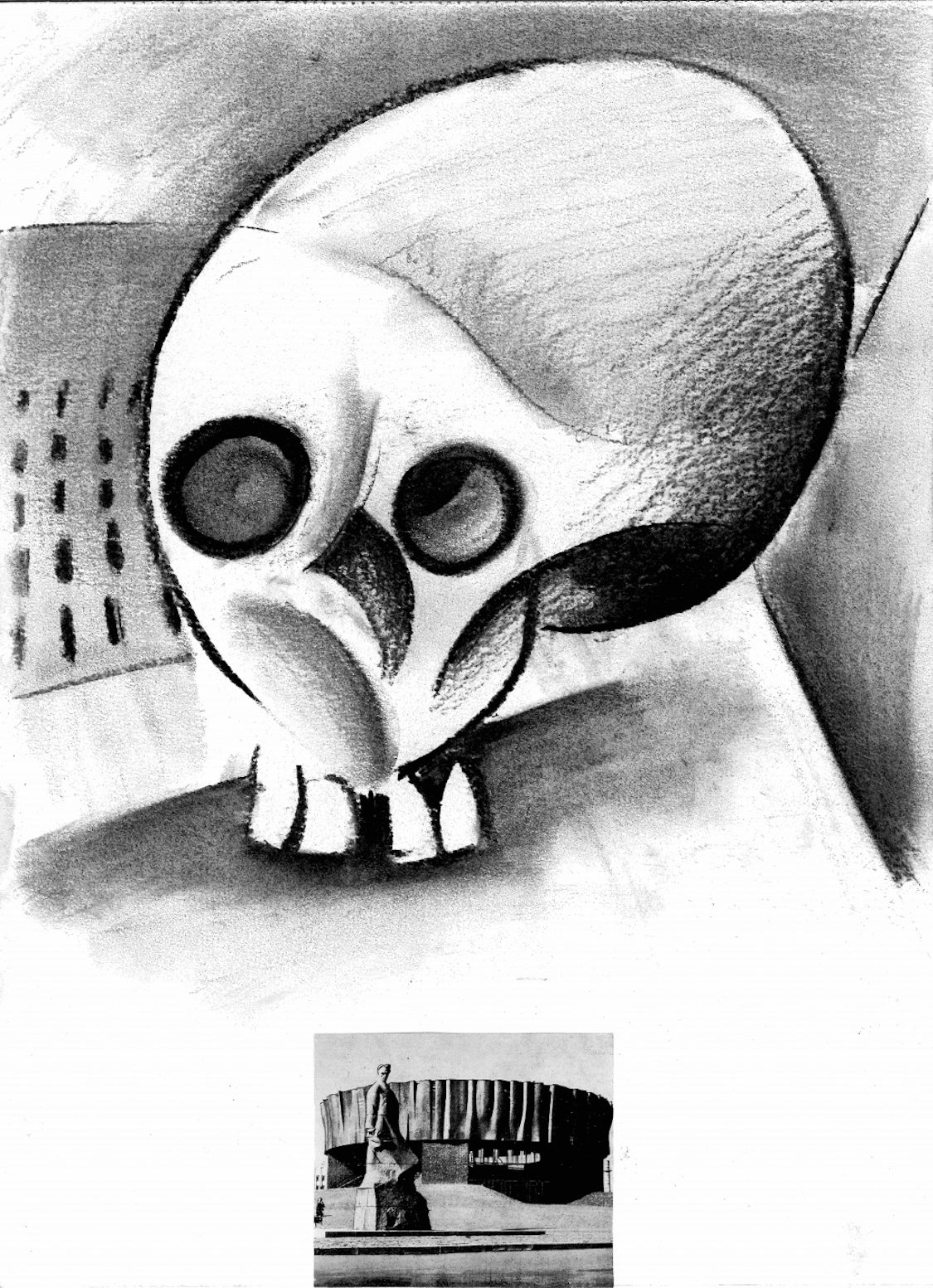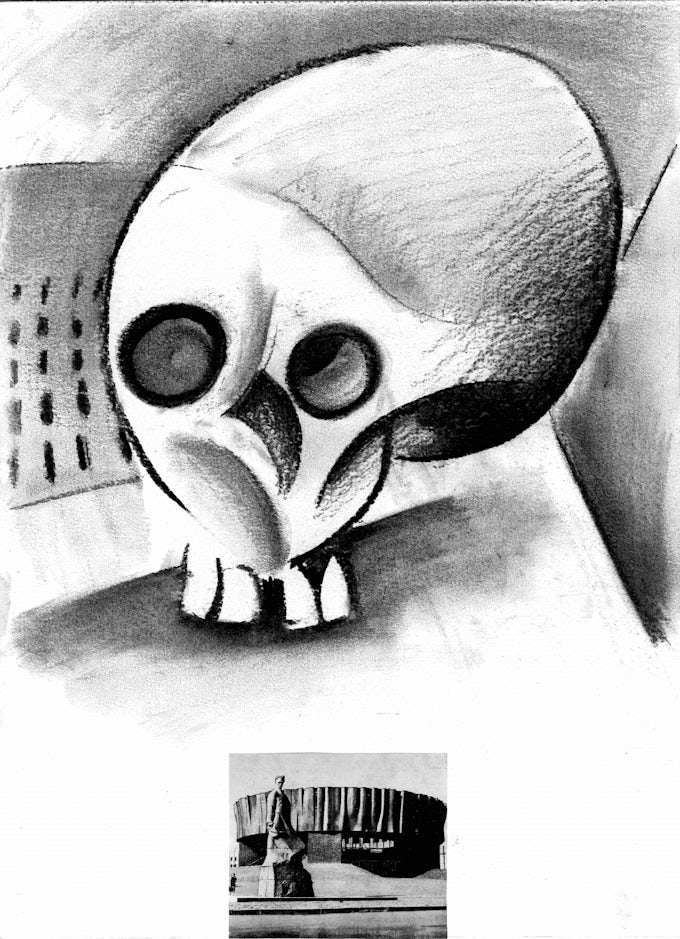Another paradox that characterises this situation is that in the Soviet Union these buildings were never called ‘modernist’. ‘Modernism’ was only used in a strictly negative sense. The skulls painted by Pablo Picasso often served as illustrations for anti-modernist books, such as The Crisis of Ugliness: From Cubism to Pop-Art (1968) by Mikhail Lifshitz. Soviet discussions about modernism and modernity are now almost forgotten and Soviet architecture and monumental art have been turned into ‘Soviet Modernism’ for a younger generation.
I picture modernist skulls by Picasso as protecting SovMod building fetishes that still remain untouched in Kyiv, Dnipro, Odessa or in the war zone of Donetsk.
